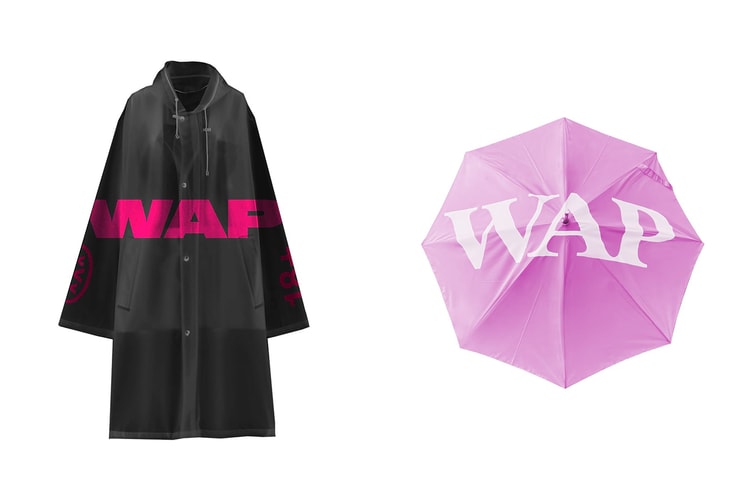Seven Japanese Architects You Should Know
How the island nation became the vanguard of modernist architecture.

Japan’s urban landscape is a colorful mosaic of age-old landmarks and ultra-futuristic facades. From monuments like Kyoto’s Kinkakuji temple and the Tokyo Imperial Palace, to modern buildings like the Nagakin Capsule Tower and Harajuku’s Iceberg, the small island nation is a glowing stage for architecture that brings in curious travelers from across the world.
For Japan, modernity has been a process of considerable Westernization, beginning with the Meiji Restoration of 1868. The Meiji era was a period of rapid socioeconomic growth; the country integrated foreign influences with traditional values, leading to major technological innovations. Changes in materiality were a major contributor to Japan’s urban development: architecture transitioned from wood to brick, followed by the introduction of steel-reinforced concrete later on in the Taisho period (1912-26). Large stone landmarks constructed during the era — like The Bank of Japan, completed in 1882, Akasaka Detached Palace, 1909, and Tokyo Station, 1914 — are but a few examples of the aesthetic and functional evolution of the country’s urbanity.
Today, the nation is dotted with distinctive facades bred from a tasteful cross-pollination between European minimalism and old zen philosophies: an architectural frontier for the creative pioneer. It wasn’t until after World War II, however, that Japanese architects gained recognition abroad. Kenzo Tange, commonly cited as the catalyst for Japan’s post-war modernism, and many others after him left their marks on the international stage. In just a little over half a century, a flood of new architectural vernaculars came rushing through the country’s gates. We look at seven Japanese architects who continue to define what Japanese architecture means, shaping the nation’s ever-evolving landscape.
Kenzo Tange

Bettmann/Getty Images
Many would claim Kenzo Tange as the godfather of postmodern Japanese architecture. Much of his style was influenced by the works of Swiss modernist Le Corbusier, as evident in one of Tange’s very first projects: Hiroshima Peace Memorial Park.
Unveiled in 1954, the site was constructed as a national symbol for peace and a monumental memorial ground, as part of a large-scale effort to rebuild Hiroshima after the devastating effects of the 1945 atomic bomb. The park’s centerpiece is a museum flanked by a set of large utility buildings interconnected by high-level walkways, with the museum itself made from bare reinforced concrete. Its first floor is leveled six meters above ground by massive pilotis, while the building’s access is a regal, free-standing staircase. Free of any excess distractions, this design ensures the museum’s contents remain the main focus of the site. Capping off the project, Tange placed a parabolic sculpture in the park’s garden to pay respects to Japan’s former rulers: a serene saddle-like figure mirroring sixth-century Haniwa tombs.
Tange followed up the Hiroshima Peace Memorial Park with one of his more peculiar projects: the 1960 Tokyo Bay Plan, which birthed one of the most ambitious movements in the history of Japanese architecture. Never fully realized, the proposal attempted to meet the needs of Tokyo’s continued urban expansion but became more of an idea than an actual blueprint. A linear megastructure that would float over Tokyo Bay, it was intended to act as an open network for highways and subways where people could commute freely.

Lasagnaforone/Getty Images
Tange wanted to change Tokyo’s radial centripetal infrastructure to a linear system made to accomodate automobiles. He envisioned a transformative unification of the city’s infrastructure, but the project was — to its detriment — too ambitious, with a cost beyond reasonable consideration.
But a group of architects later appropriated the concept as the foundation of a new set of radical design ethos based on left-leaning political theory and collectivist philosophies, which they coined as Metabolism. Kiyonori Kikutake, Kisho Kurokawa, Fumihiko Maki and other young architects introduced the concept to the world in the form of a manifesto at the Tokyo World Design Conference in 1960.
Kisho Kurokawa

Kurita Kaku/Getty Images
Metabolism is an architectural theory that suggests urban cities should have foundations upon which existing structures can transform and expand, rather than be demolished for new buildings; the word “metabolism” is in reference to the metabolic growth in natural organisms. Following the theory, a city’s infrastructures and buildings can be modular, easily replaced and supported by means of efficient, cost-effective mass production. Kisho Kurokawa, one of the key founding Metabolists, dreamed of one day seeing his utopian fantasy come to life.
Metabolism remained largely theoretical and only a handful of full-realized examples of its principles exist today. Kurokawa’s Nakagin Capsule Tower, a futuristic mixed-use residential-office tower in Tokyo’s Shimbashi district, remains one of the most recognizable landmarks of the movement. Part cyberpunk, part Kubrickian daydream, the tower’s almost extraterrestrial, bug-eyed design has been endlessly studied and admired from inside and out by curious onlookers.
The entire building was completed in just 30 days in 1972 and was the world’s first capsule architecture. It was constructed as two interconnected concrete towers, housing a total of 140 modular capsules that can be kept as individual shelters or connected to one another to create larger spaces. Measuring at approximately eight by 13 feet, each capsule is supported by four high-tension bolts from its neighboring unit. Every unit was made completely separate from the building and subsequently hoisted up and lodged into the structure’s greater skeleton. This design method ensured the capsules could be mass produced and wholly replace aging units without compromising the tower, albeit none have ever been replaced to this day. Its interiors house only the most essential appliances, like a kitchen stove, fridge, TV and tape deck on one side of the room, a bathroom unit the size of an airplane’s washroom on the opposite corner, and a bed on the far end directly below a large concave window. The tower is a testament to urban efficiency, originally intended for the typical Japanese salaryman, a true sight to behold and an equally enigmatic case study for architecture.
Kurokawa’s interest in Metabolism, however, began to dissipate later on in the ’80s. The architect’s direction pivoted slightly towards work that he felt was a little less radical but a lot more relatable to the real world. In 1989, he built the Hiroshima City Museum of Contemporary Art, the first art museum erected in Hiroshima since WWII. At the heart of the building is a circular void, representing the devastating drop of the atomic bomb, where rubbles of stones left from the attack sit beneath the column. Its steel and concrete structure, takes up roughly 3,710 square meters, bearing gabled roofs that resemble thatched structures of traditional village homes to reflect Japan’s heritage.
Kengo Kuma

Jeff J Mitchell/Getty Images
Kengo Kuma knew at the age of 10 that he was going to become an architect, as he decided when he stood in awe of Kenzo Tange’s Yoyogi National Gymnasium during the 1964 Tokyo Olympics. The towering masterpiece, with its dramatic slopes and soaring mast, remains a marvel of engineering.
That Kuma would design the next great national stadium, more than five decades later, seemed like destiny. But unlike Tange, Kuma never went abroad to study architecture. Instead, he developed a style that focused on resurrecting traditional techniques and modernizing them by working with local craftsmen and woodworkers.
A good example of Kuma’s mix of tradition and modernity is a small cake shop nestled on a quiet corner in Tokyo’s Minamiaoyama neighborhood. Commissioned by SunnyHills, Kuma conceptualized the shop as a bamboo basket to reflect the meticulous preparations of the company’s signature pineapple cakes. Roughly 5,000 meters of 3D timber slats make up the exterior walls and inner ceiling — some strips were made short and others long, arranged at angles of 30 and 60 degrees for a multi-layered design. Kuma decided to use a special technique called jigoku-gumi, a traditional Japanese wood-joining system that interlocks laths without any nails or glue.
The 2020 Tokyo Olympic Stadium was originally commissioned to the late Zaha Hadid. The project, however, was later redirected to Kuma due to concerns about the rising costs of Hadid’s initial plan. In a departure from Hadid’s futuristic vision, Kuma insisted instead on an entirely new direction that reflected the site’s natural surroundings — he conceptualized the stadium as a “living tree” amidst Tokyo’s Meiji Jingu Gaien area.
Wood gathered from 47 of Japan’s prefectures make up the stadium’s multi-layered eaves, forming a grand assembly of symmetrical wood louvers that demonstrate Kuma’s perfectionism. Above these features rest a formidable truss of steel beams and laminated lumber that offer considerable support while being flexible enough to reduce wear and tear from wind and earthquakes. A holistic birds-eye-view reveals a 60,000 seating arrangement, sectioned off into five warm earth tones. The stadium is also thoughtfully designed with proper wheelchair seating, distributed evenly across all floors. Large 185 airflow-creating fans and mist-cooling systems are tactfully positioned around the stadium to keep everyone cool.
Tadao Ando

Eric Vandeville/Getty Images
Tadao Ando’s road to success has been rather unusual. He’s never had any formal training; nearly everything he knows about architecture came from books, and much of his style was developed through close examination of Le Corbusier’s works. Yet by 28, he had opened up his very own one-man design firm Tadao Ando Architects & Associates.
One of his most distinct projects is 21_21 Design Sight, located in Roppongi, Tokyo. The museum encompasses a formidable two-level 4,252-square-foot structure and its single-story 2,174-square-foot twin. Both are almost entirely hidden underground: their trapezoidal hand-sanded steel roofs, whose design was inspired by Issey A-POC (“A Piece of Cloth”), appear to float majestically above ground. Inside, the museum features tall, stretching windows that indirectly illuminate natural light from above, casting sharp angles of sunlight depending on the time of day. This effect was made possible by creating an open cavity between the two buildings, freeing up the interior’s concrete enclosure that might have otherwise felt claustrophobic. According to Ando, the museum was not just simply made for hosting exhibits but for stirring dialogue and exchanging ideas about design.
In the western foothills of the Yodo valley, 15 miles north of Osaka in the humble town of Ibaraki, sits another one of Ando’s most celebrated works: Church of Light. Built in 1989, the structure is just 113 square meters, about the size of a small Japanese house. The church is split into three concrete cubes, divided by a chapel and a subtle entrance area, housing just the most essential finishes: wooden floorboards and benches repurposed from scaffolding used in the building’s construction. One distinctive feature is a thinly cut-out cruciform behind the altar, casting a dramatic scene of light against its concrete interiors. Ando made precise measurements to the cruciform so that light aligns perfectly with joints in the concrete during the day. This intersection, where visitors of the space are positioned, is meant to symbolize a division between the spiritual and the secular.
Sou Fujimoto

Rune Hellestad – Corbis/Getty Images
Sou Fujimoto grew up in Hokkaido, the northernmost island of Japan whose sprawling forestry accounts for 22 percent of the country’s total forestland. Fujimoto spent much of his childhood exploring the island’s vast wilderness, which he claims inadvertently informed his naturalistic approach to architecture.
Fujimoto draws parallels between a forest’s ecology and Tokyo’s urban landscape. In the same way forests surround people with leaves, branches, shrubs and other living things, Fujimoto sees the abundance of novel objects in Tokyo, like floating street signs and electric cables, in a similar light. He embraces the random free-wheeling structure of nature and tries to mirror its effects through man-made spaces, often modeling his architecture after a forest’s natural formations.
Sou Fujimoto’s NA House in Tokyo can be thought of as either a home or a single multi-leveled room. Completed just eight years ago, the three-story house rests in quaint Koenji, Tokyo, blending quietly with its suburban surroundings. Inspiration for the house came from the layered structure of a tree — an assembly of different planes that intersect and overlap as parts of a single unit. There are little to no walls and as such no separate rooms — just glass and semi-demarcated spaces. Like branches of a tree, the spaces are closely positioned and seamlessly stack all the way to the top. Each room is lightly delineated by raised platforms and modular stairs. The entire house is made with glass and white steel frames, allowing natural light to pass through at every angle, like filtering sun rays through the leaves of a tree.
Fujimoto’s Musashino Art University Museum & Library in Tokyo is one of his most outstanding works to date. The architect aimed to create a space for visitors of the library where one can “wander and discover new books or ideas” in the same way they might wander through a forest. The interiors are lined with walls built as towering wooden shelves that climb all the way up to the ceiling, accompanied by a flurry of cabinets, and even staircases, that uniformly double as shelves. The space is also interspersed with glass walls and ceilings for textural contrast, facilitating light to engulf the library without affecting its warm atmosphere.
Kazuyo Sejima

Vincenzo Pinto/Getty Images
Apart from being one of Japan’s leading architects, Kazuyo Sejima became the second woman, after Zaha Hadid, to ever win the Pritzker Prize. After graduating from Japan Women’s University in the ’70s, Sejima apprenticed under internationally recognized architect Toyo Ito. Much of her work involves intricate arrangements of minimalistic materials, like glass, marble and clean cut metals, to create gleaming hyper-modern facades — squares and cubes are recurring shapes in her works. Almost every one of her projects is conceptualized around a site’s natural environment, seamlessly blending the indoor and outdoors with extensive windows for a sense of openness and a fluid ambiance.
One of Sejima’s most notable works — and the one that won her the Pritzker Prize — is the 21st Century Museum of Contemporary Art Museum in Kanazawa, Japan. Just a year after opening its doors in 2005, the museum tallied up roughly 1,500,000 visitors. Before construction began, Sejima was tasked with finding a way to accommodate a long list of programs and facilities — reading rooms, a library, a children’s workshop, a restaurant, a lecture hall, display areas and other amenities. To do this, the architect drafted up a complex mixed-use design that created spaces for both the public as well as paying visitors. The museum embodies a circular structure walled by glass, with a diameter of approximately 112 meters that allows access from multiple points. While the museum itself is large and highly subdivided, its ambiance is bright, nuanced and open.
A little over a decade after winning the Pritzker Prize, Sejima went on to design the Sumida Hokusai Museum in Tokyo. Located in the city’s Sumida Ward, the museum is a four-story monolithic structure, walled by reflective surfaces that blend into its surroundings. Slick glass cut-outs are angled to bring natural light into the heart of the museum. Its triangular geometry runs through the building, providing a unique skeleton for heightened walkways and apertures. The entire museum is dedicated to the work of the renowned ukiyo-e woodblock painter Katsushika Hokusai, who spent most of his life in Sumida two centuries ago — Japan’s Edo period. Apart from showcasing art, the building hosts special exhibitions that examine the artist’s life in Sumida, alongside regular seminars and workshops that present the artist’s work to the public.
Oki Sato

Vittorio Zunino Celotto/Getty Images
Oki Sato is the face of nendo, a Tokyo-based studio whose projects span over 400 clients each year — often taking on a new product each week. Yet the studio manages to keep its place as one of Japan’s leading design firms.
Sato broke onto the scene in 2008, first as an industrial designer rather than an architect through a submission for Issey Miyake’s XXIst Century Man show at the 21_21 Design Sight museum. The project was called “Cabbage Chair,” created using delicate rolls of pleated paper repurposed from discarded bits of Miyake’s Pleats Please collection. This put Sato on the international stage, where even notable museums like MoMA and the Victoria added the chairs to their exhibitions.

Nendo
While Sato’s body of work is expansive, from special Cup Noodles sporks to a pair of Camper shoes, all of his designs somehow embody a consistently recognizable aesthetic. Sato named his company nendo, Japanese for “clay,” as a reflection of his playful design approach, often enlivened by simple forms that hide considered nuances — a curious synthesis of Japanese and Scandinavian minimalism. According to Sato, “good design is when I can explain my ideas to my grandmother or to a young child.”
One of nendo’s most recent undertakings is Stairway House, named for its colossal gray staircase fixture. Situated in Tokyo’s Shinjuku, the home was made for three generations in a quiet, humble neighborhood and intended to “expand further out to join the environs and the city.” A giant hyperbolic staircase cuts right through the middle of the house, protruding beyond the house’s glass front and spreading out to the courtyard. The outside steps are made of concrete, while the inside uses steel; both sections are cast in a consistent dark gray shade that aggressively climbs up all three floors.
Hidden within the enormous feature are separate rooms and functional staircases that give access to the upper floors. To brighten up the minimal design, the residents decorated the center structure with a leafy assembly of plants to create a habitable greenhouse aesthetic.



































































